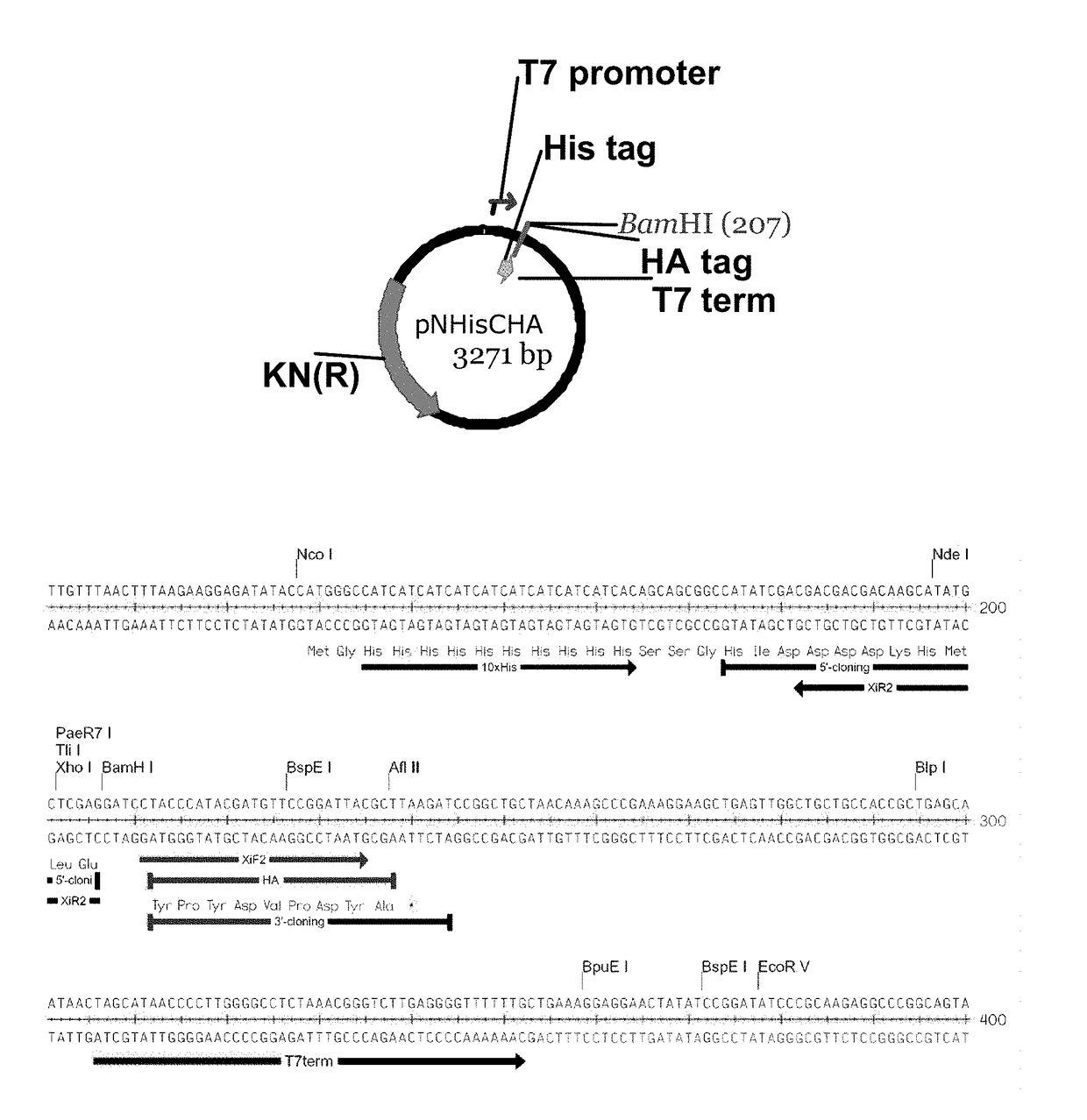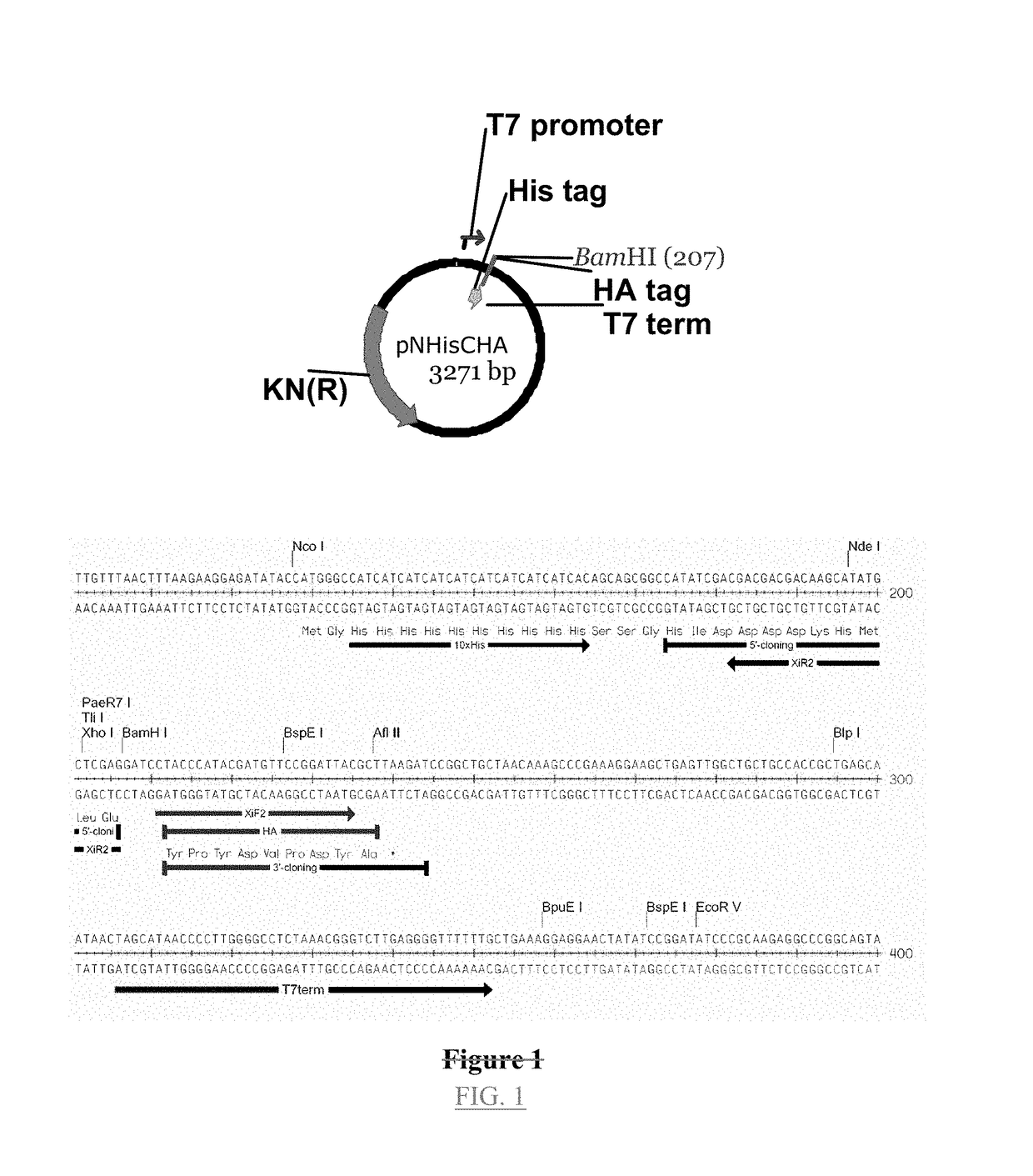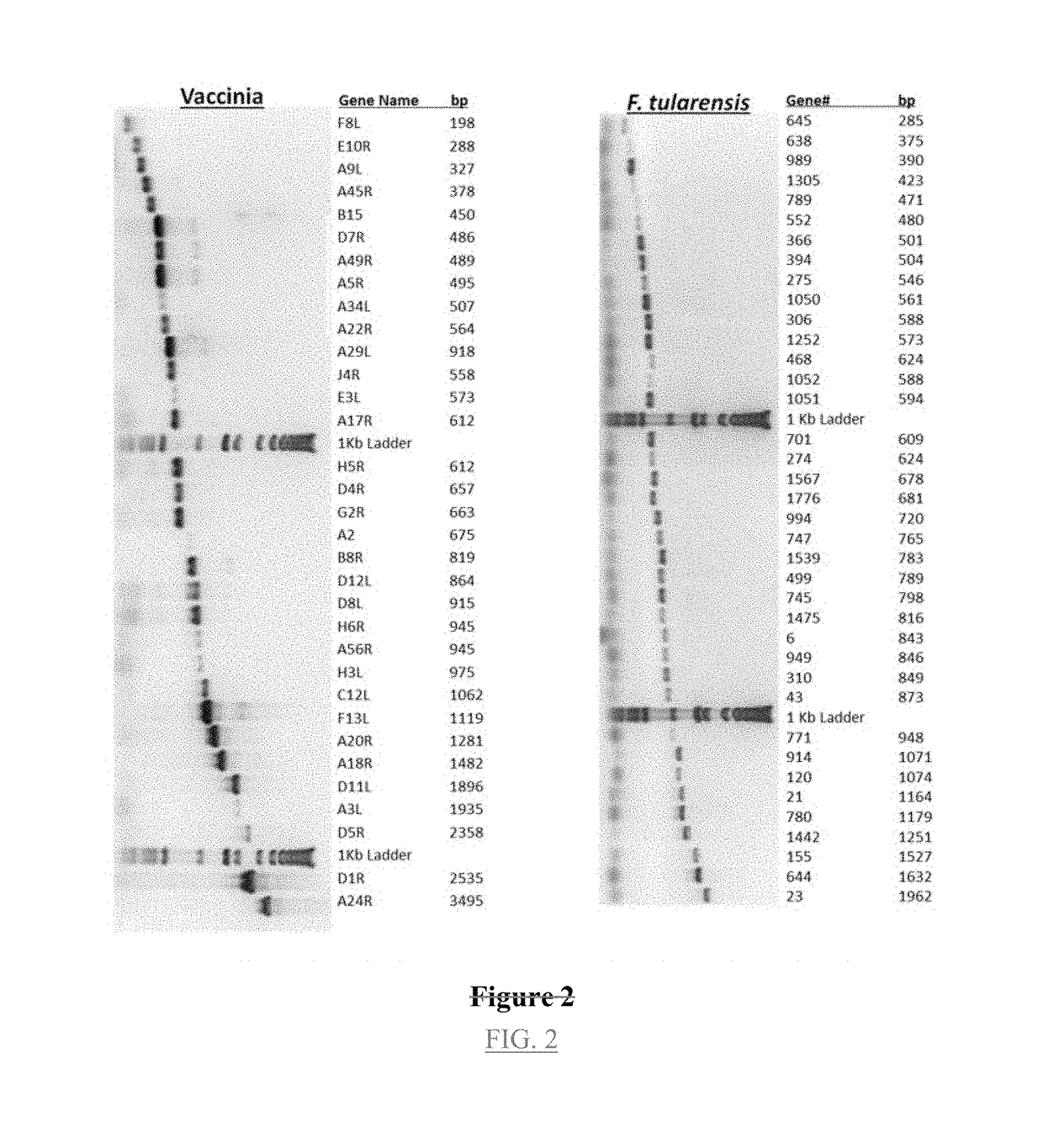Methods for making arrays for high throughput proteomics
a proteomics and array technology, applied in the field of making arrays for high throughput proteomics, can solve the problems of insufficient protein amount of the method described to obtain the protein array, the inability to readily provide large numbers of proteins representing most, and the inability to isolate mutants rather than intact proteins
- Summary
- Abstract
- Description
- Claims
- Application Information
AI Technical Summary
Benefits of technology
Problems solved by technology
Method used
Image
Examples
example 1
Preparation of Vector and Inserts
[0106]A linear T7 vector encoding an N-terminal histidine tag and a C-terminal HA tag was generated by extensive restriction digestion followed by PCR; this procedure reduced the amount of residual circular vector and background colonies to nearly zero when it is transformed without complementary insert into chemically competent E. coli.
[0107]The plasmid used to generate the linear recombination vector pXT7, is shown in FIG. 1. This vector contains a T7 promoter, followed by ATG start codon, a 10× histidine sequence, a spacer sequence in front of the first codon of the open reading frame to be cloned, a BamH1 site, and a T7 terminator. The vector was double digested at the BamH1 site to eliminate residual circular vector, since incompletely digested vector creates background colonies that lack insert. This linearized vector was amplified by PCR to generate inventory of the linear recombination vector. Each batch of linear vector was transformed into...
example 1a
[0113]Applying these methods to the vaccinia virus required preparation of primers for 213 genes, from which 211 PCR products were isolated (>99%). All 211 of these were cloned, and 181 of the products were submitted for sequencing; 93% (169 out of 181) provided the predicted sequence.
[0114]EXAMPLE 1B
[0115]Similarly, applying the methods to P. falciparum required preparation of primers for 720 genes. From these, 462 PCR products were obtained (64%), and 266 clones were produced (58%). A set of these (63) were submitted for sequencing, with 97% giving the expected sequence.
[0116]EXAMPLE 1C
[0117]The above methods were applied to Mycobacterium tuberculosis for which primers for 108 genes were prepared. From these, 87 PCR products were obtained (80%) and 80 clones were produced (92%), each of which had an anti-His tag on one end and an anti-HA tag on the other. Sequencing confirmed that 70 out of 79 tested (88%) contained the expected sequence. In most of the proteins produced, both the...
example 1d
[0119]The above methods were applied to F. tularensis for which primers for 1933 genes were prepared. From these, 1842 PCR products were obtained (95%) and 1720 clones were produced (93%). Sequencing of 684 of these showed that 643 (94%) contained the expected sequence.
PUM
 Login to View More
Login to View More Abstract
Description
Claims
Application Information
 Login to View More
Login to View More - R&D
- Intellectual Property
- Life Sciences
- Materials
- Tech Scout
- Unparalleled Data Quality
- Higher Quality Content
- 60% Fewer Hallucinations
Browse by: Latest US Patents, China's latest patents, Technical Efficacy Thesaurus, Application Domain, Technology Topic, Popular Technical Reports.
© 2025 PatSnap. All rights reserved.Legal|Privacy policy|Modern Slavery Act Transparency Statement|Sitemap|About US| Contact US: help@patsnap.com



